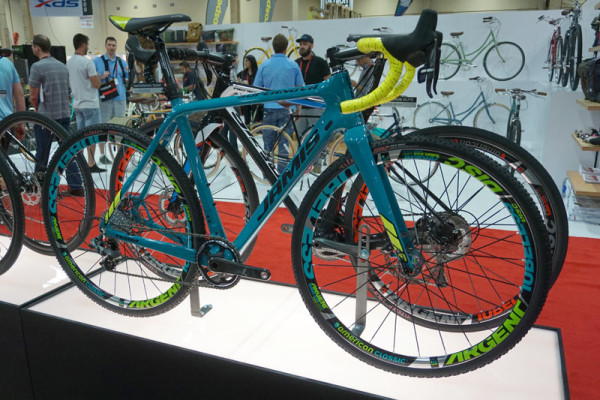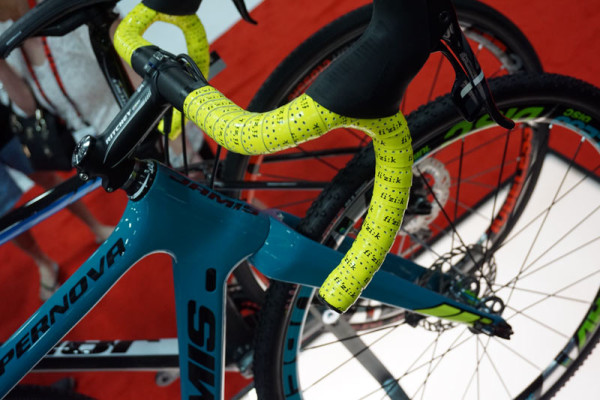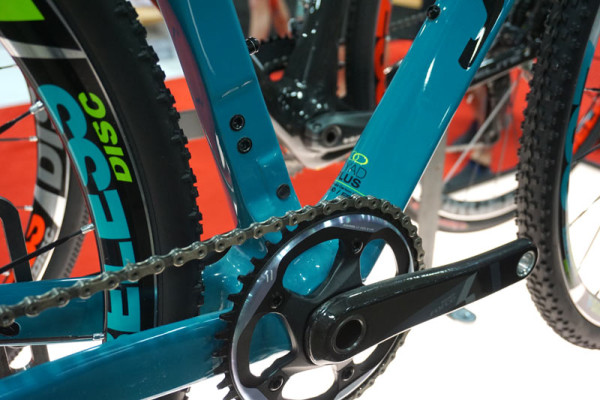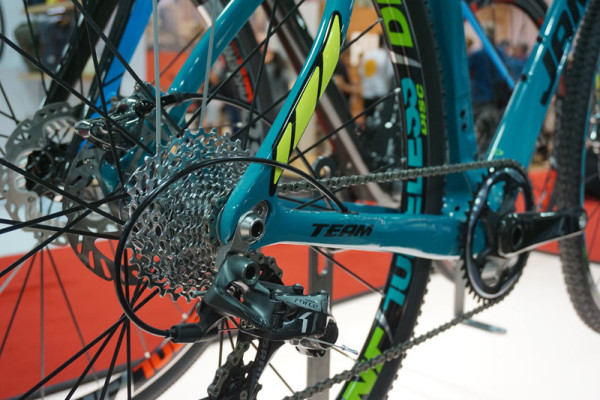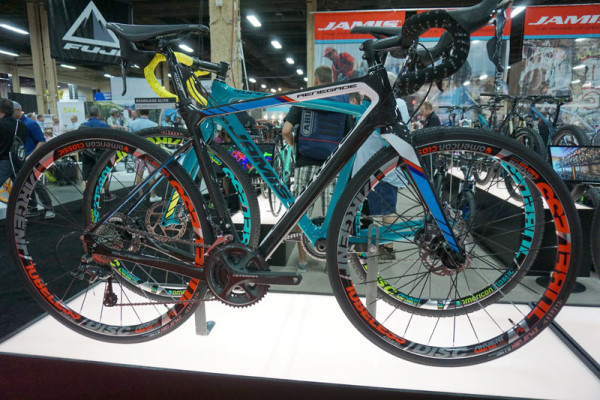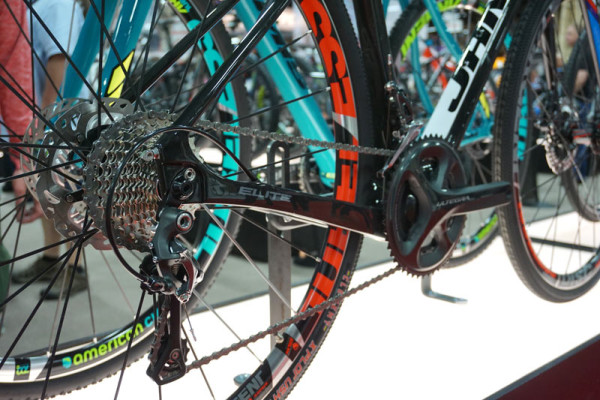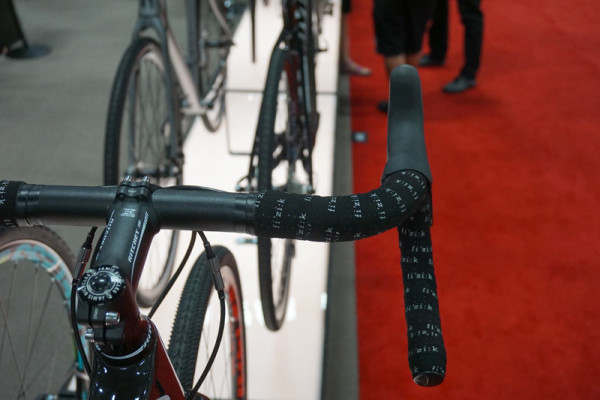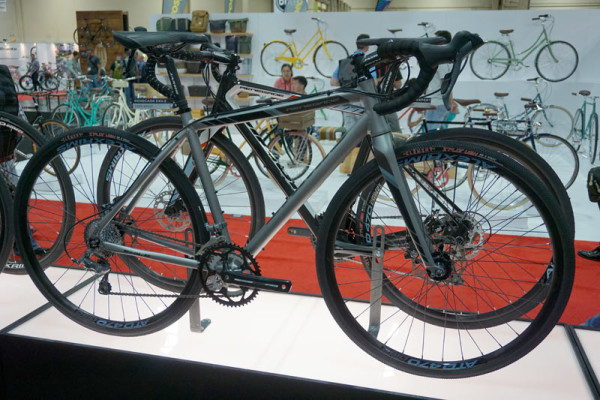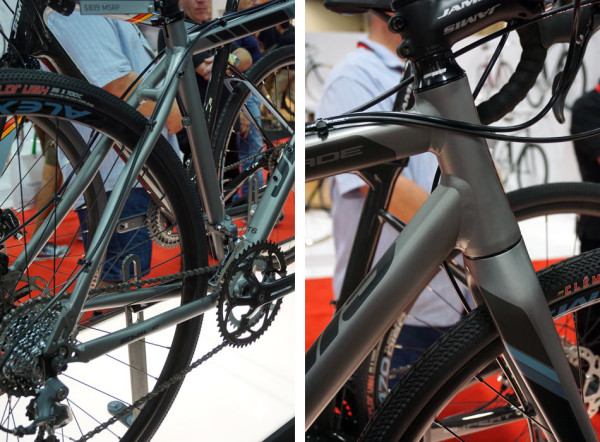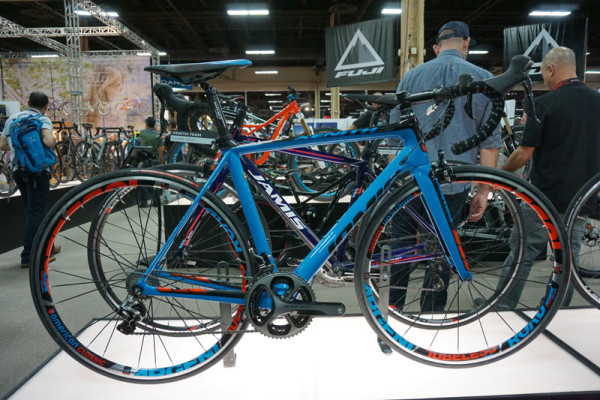Jamis’ SuperNova carbon race cyclocross bikes gets updated to thru axles front and rear with self-centering dropouts for quicker, easier wheel changes…and their Xenith road bike finds another way to speed up wheel swaps.
For 2016, the Supernova’s carbon frame options become the same, using the 2015 Pro’s standard mod and doing away with the more expensive hi-mod Team frame. There are still Team and Pro complete bikes, it’s just that they’re now sharing the same frame. That was done to bring their top end down a notch in price, and it drops $200 while still getting the thru axle and other upgrades. Not to worry, the base carbon frame is still made using silicone and hard polystyrene molds on the inside with a vacuum purge to pull all the air out, resulting in a dense-yet-light carbon structure that eliminates voids and wrinkles. And they’re still doing size specific tubes and layups, but the Elite’s price hops down to $4,299.
All cable housing runs inside the frame, but there’s one less cable to run for all 2016 cyclocross bikes thanks to 1×11 upgrades across the board. That includes the alloy Nova Pro, which also gains the rear thru axle. All three bikes also get tubeless ready wheels, making them ready to hit the start line right out of the box…
Color and graphic updates are slapped on all the bikes, with the dashed lines and squares carrying a brand motif across most models. The colors look way better in person than come through in these photos.
You’ll still be able to add a front derailleur if you want, but all CX bikes come with SRAM 1×11 groups. The Supernova Pro gets top of the line Force 1 (aka CX1), and the middle child Supernova Elite ($2,899) and Nova Pro ($1,999) get Rival 1. Both carbon models get Enduro Evo bottom brackets, and the sole alloy bike gets a standard Enduro BB. Carbon bikes use the BB386 EVO standard to push the chainstays out as wide as possible for better stiffness…
…but the stays were brought slightly inboard toward the rear to improve heel clearance.
The rear of all three bikes now have a 12×142 rear thru axle, which ups the package stiffness and improves safety compared to running disc brakes with standard quick releases.
For 2016, one of my favorite bikes I’ve reviewed gets even better. Introduced at Interbike last year, the latest version upgrades to a thru axle in the rear. The fork already had it, now they’re on both ends.
A 12×142 Maxle connects the dots now, and their thread-in stealth fender mounts remain. Other updates to the Elite model include a switch to Centerlock hubs on the American Classic wheels and an Enduro Evo bottom bracket.
Below it, the Expert uses the same molds but with a less hi-mod carbon fiber blend, Alex wheels (also Centerlock), Shimano 105 mated to TRP HyRD mech-to-hydro brake calipers, and Ritchey handlebar and stem.
They’ve also added 12º flared handlebars on all of the Renegade models…which start at just $839. Same goes for tubeless rims and Clement tires.
“Under $900 for a carbon gravel bike,” you ask? No, not quite…that would be the all new alloy version:
The Renegade Exile joins the lineup with all the same key design features, except in aluminum. It slots in at just $839, sitting underneath the steel Renegade Exploit and Expat models Jamis showed off at Sea Otter.
It has a 6061 double butted main frame that, like all of the bikes here, uses size specific tubing. The fork has alloy lowers with a tapered chromoly steerer.
It’s built with Alex tubeless ready wheels, Clement tires and a Shimano Claris 2×8 group to get you started. All cable routing runs in full length housing along the top of the top tube for minimal maintenance. It even gets the Ritchey flared handlebar on an otherwise alloy Jamis-branded cockpit.
The Xenith road bike line gets the usual spec updates, and the top of the line Xenith Team comes in at $4999 with a full Dura-Ace 9000 group. It also gets the lightweight American Classic Argent Road Tubeless wheels with Vittoria Open Corsa 700×23 tires.
Jamis fans may realize that means no more SL model, which topped out at $8,500 for 2015. Another big change is they’ve done away with the aero fork that had integrated TRP v-brakes. They say their pro teams couldn’t make wheel changes quick enough with it, so they switched to a more traditional fork and brake caliper. The upper three Xenith models get a new version of their standard fork with better fibers and layup to save a few grams over the original, which let it come in at the same system weight as the aero fork.
